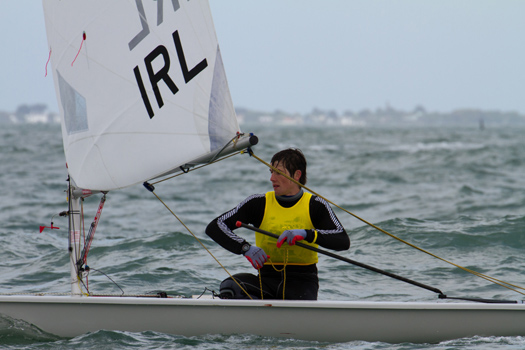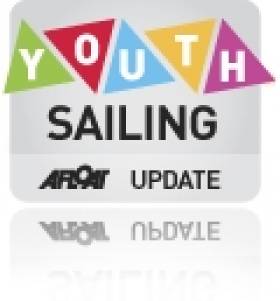Displaying items by tag: juinor sailing
Doran to Defend Junior Sailing Title
#YOUTH SAILING – The Royal St. George Yacht Club stages the All Ireland Junior and Girls Sailing Championships this weekend in a fleet of nine Firefly dinghies. The invitational championship, which will see 18 of Ireland's leading junior sailors compete for the title of 2011 Champion, was originally scheduled for late October but scrubbed because of a bad weather. The bad news for the event this weekend is that Saturday's forecast is also poor with 50 mph gusts to hit Dublin Bay.

Philip Doran is set to defend his Junior title on Dublin Bay this weekend. Photo: Gareth Craig
Having placed 10th at the ISAF Youth World Championships earlier this year, 2010 champion Philip Doran will be eager to defend his title. He'll face some fierce opposition though in the form of Seafra Guilfoyle who came 2nd at the Laser 4.7 European Championships as well from some of the younger competitors such as Patrick Crosbie, who this year came 3rd in the Topper World Championships, and Eoin Keller who won the Laser National Championships, to name but two.
Also defending her 2010 Girl's title will be Sophie Murphy who had an outstanding year, coming third in the U18 ISAF Youth World Championships. However six other girls will be ready to challenge her for the prestigious accolade including Emma Geary, who as a 420 sailor is experienced in double handed boats and some of the younger sailors such as Sophie Browne who is ranked 1st Senior Optimist sailor in Ireland.
Each competitor will sail with one crew member of their choice in one of the nine Fireflies. On Saturday the teams will be separated into two flights (groups) and will sail three races each. The same flights will then sail an additional two races on Sunday with the top three teams in each flight progressing through to the medal race.
The 18 competitors taking part in the 2011 ISA Junior & Girls All Ireland Sailing Championships are:
|
|
Name |
Club |
Class |
Male / Female |
|
1 |
Kerri-Ann Boylan |
Skerries Sailing Club |
Mirror |
Female |
|
2 |
Sophie Browne |
Tralee Bay Sailing Club |
Optimist |
Female |
|
3 |
Patrick Crosbie |
Royal Cork Yacht Club |
ISA Pathway |
Male |
|
4 |
Fiona Daly |
Tralee Bay Sailing Club |
ISA/420 |
Female |
|
5 |
Tiarnan Dickson |
Lough Ree Sailing Club |
Mirror |
Male |
|
6 |
Sean Donnelly |
National Yacht Club |
Optimist |
Male |
|
7 |
Philip Doran |
Courtown Sailing Club |
ISA Pathway |
Male |
|
8 |
Gregory Fay |
Dungarvan Harbour Sailing Club |
Topaz |
Male |
|
9 |
Emma Geary |
Royal Cork Yacht Club |
ISA Pathway |
Female |
|
10 |
Robbie Gilmore |
Strangford Lough Yacht Club |
Laser Radial Male |
Male |
|
11 |
Laura Gilmore |
Strangford Lough Yacht Club |
Topper |
Female |
|
12 |
Seafra Guilfoyle |
Royal Cork Yacht Club |
Laser 4-7 Male |
Male |
|
13 |
Eoin Keller |
Lough Derg Yacht Club |
Laser Radial Male |
Male |
|
14 |
Peter McCann |
Royal Cork Yacht Club |
ISA Pathway |
Male |
|
15 |
Sophie Murphy |
Royal St George Yacht Club |
ISA Pathway |
Female |
|
16 |
Lisa Smith |
Greystones Sailing Club |
RS Feva |
Female |
|
17 |
David Whittaker |
Royal Cork Yacht Club |
RS Feva |
Male |
|
18 |
Adam Hyland |
Royal St George Yacht Club |
Optimist |
Male |





























































